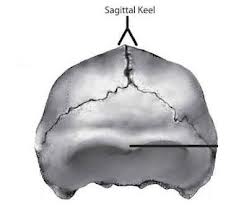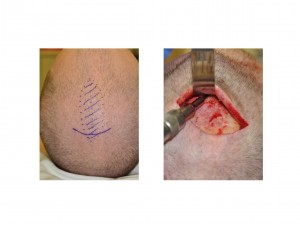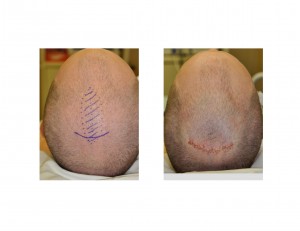Background: While many perceive that the skull is round and smooth, the reality is that is oblong and often irregular in many people. The skull is prone to lumps and bumps that often occur at its sutural interdigitations or crossroads. The cranial sutures are the last areas of the skull that ossify, often well after birth and are active sites of bone deposition and resorption. This can create areas along their sutural path that are not smooth transitions between the different palates of skull bone.
One particular area of the skull that is prone to a non-smooth abnormality is the sagittal ridge or crest This is a raised area of bone that develops between the infantile areas of the anterior and posterior fontanelles. (soft spots) According to the Urban Dictionary a sagittal crest or a raised ridge of bone in the midline of the skull can be linked to narcissism or a higher intelligence and attractiveness. The reality is that it is either an aesthetic concern or it isn’t.

Case Study: This 26 year-old male was bothered by a high midline ridge on the back half of the top of his head. He felt that it made his skull look too triangular and not round like a normal skull. He had come to shave head due to hair loss and that is when it became very noticeable.


Case Highlights:
1) A prominent sagittal ridge or crest is the result of how the sagittal cranial suture fuses, often becoming thick and raised.
2) A thickened sagittal suture creates a visible ridge from behind the forehead back to the original posterior fontanelle area often creating a peaked or triangular shape.
3) The sagittal crest can be reduced by burring it down along its length with the amount of reduction between 5 to 7mms in most cases.
Dr. Barry Eppley
Dr. Chris Ueno
Indianapolis, Indiana



